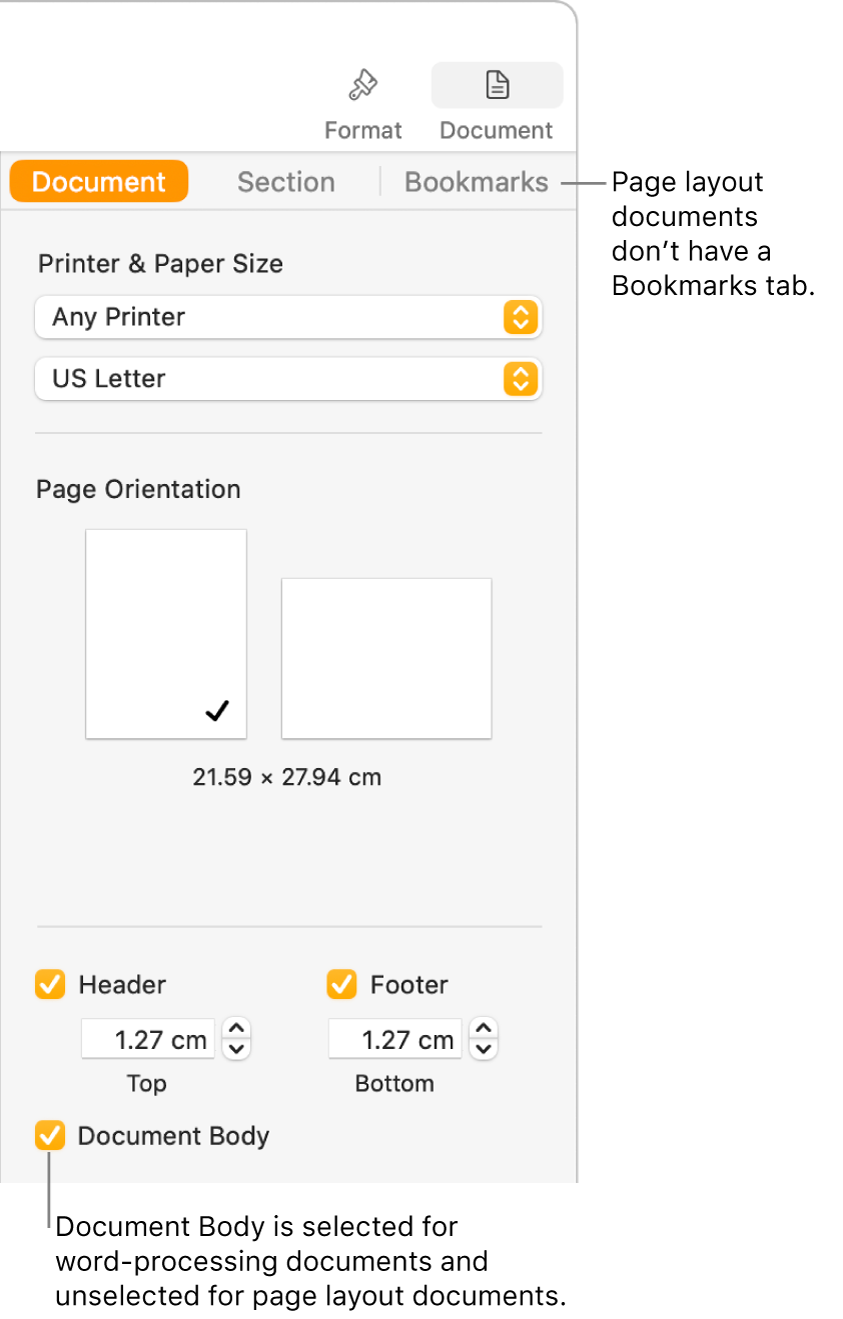The top is Page Layout format and the bottom is word processing format. As per Help in Pages:

Intro to word processing and page layout documents in Pages on Mac
Pages is a word-processing and page layout app rolled into one. Before you choose a template to get started, decide which type of document you want to create:
- Word processing: Used to create documents that include mainly text, like reports or letters. These documents have a body text area where you type, and the text flows from one page to the next with new pages created automatically when you reach the end of the page.
- When you open a word processing document (or template), you can just start typing. If you want to add text that’s separate from the main body text, you can add a text box. You can also add images, graphs and other objects.
- Page layout: Used to create documents with a more custom design, like newsletters, books or posters. A page layout document is like a canvas that you add text boxes, images and other objects to, then arrange the objects on the page however you like.
- When you open a page layout document (or template), there is no body text area; to add text you need to add a text box and type in it. New pages must be added manually.
Pages templates are designed for either word processing or page layout. The way you add or delete pages, work with objects and more depend on the type of template you choose. If you begin a document with one type of template, you can convert the document to the other type. For example, if you like the text styles, colours and layout of the School Newsletter template, but you want the design flexibility of a page layout document, you can convert the document to page layout. See Use templates.
How to tell which kind of document you’re viewing
To see whether a template (or document) is set up for word processing or page layout, open it. Click  in the toolbar and see if the Document Body tick box is selected. If it is, it’s a word-processing document. If not, it’s a page layout document.
in the toolbar and see if the Document Body tick box is selected. If it is, it’s a word-processing document. If not, it’s a page layout document.

See also
Create your first document in Pages on Mac
Add and replace text in Pages on Mac
Set paper size and orientation in Pages on Mac
Add pages in Pages on Mac
